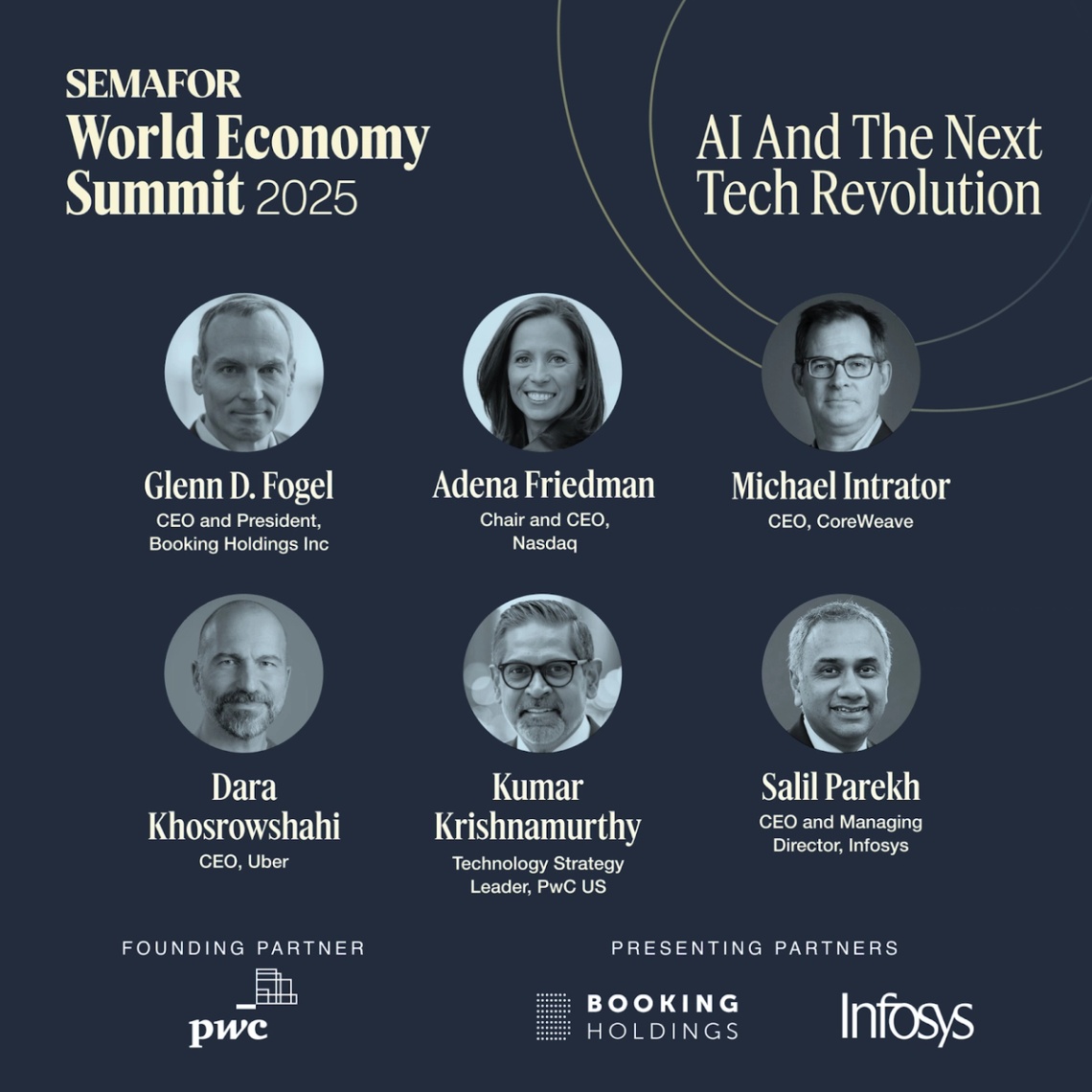 Glenn D. Fogel, CEO and President, Booking Holdings Inc.; Adena Friedman, Chair and CEO, Nasdaq; Michael Intrator, CEO, CoreWeave; Dara Khosrowshahi, CEO, Uber; Kumar Krishnamurthy, Technology Strategy Leader, PwC US; Salil Parekh, CEO and Managing Director, Infosys, and more will join the AI and the Next Tech Revolution session at the 2025 World Economy Summit. This session explores how AI is reshaping business and society, and how leaders are addressing its complex challenges in governance, access, and policy. April 25, 2025 | Washington, DC | Learn More |